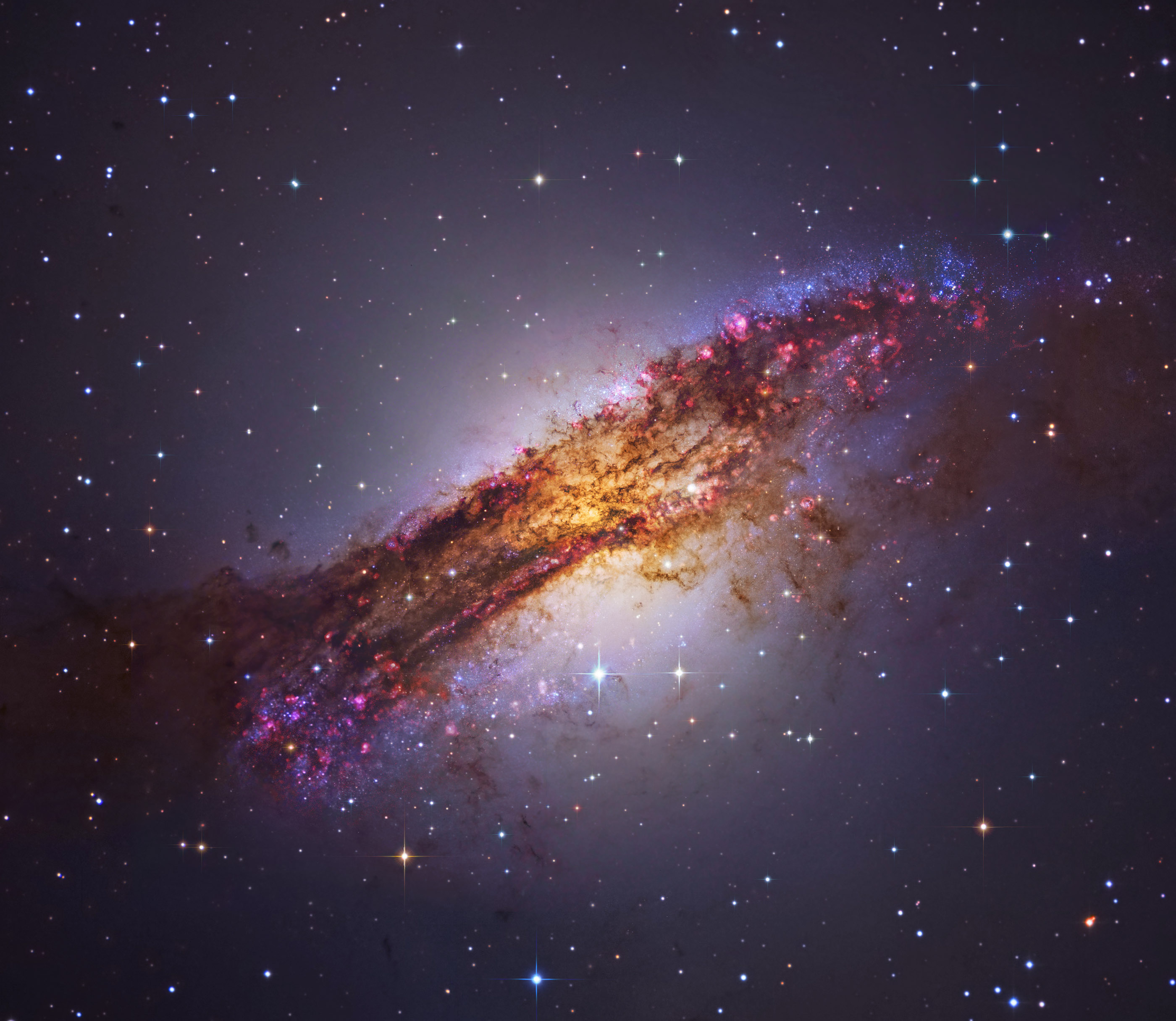
Copyright:
Robert Gendler,
Roberto Colombari
Image Data:
Hubble Space
Telescope,
European Southern Observatory
原文:
What’s the closest active galaxy to planet Earth? That would be Centaurus A, only 11 million light-years distant. Spanning over 60,000 light-years, the peculiar elliptical galaxy is also known as NGC 5128. Forged in a collision of two otherwise normal galaxies, Centaurus A’s fantastic jumble of young blue star clusters, pinkish star forming regions, and imposing dark dust lanes are seen here in remarkable detail. The colorful galaxy portrait is a composite of image data from space- and ground-based telescopes large and small. Near the galaxy’s center, left over cosmic debris is steadily being consumed by a central black hole with a billion times the mass of the Sun. As in other active galaxies, that process generates the radio, X-ray, and gamma-ray energy radiated by Centaurus A.
中文翻譯:
最近的活躍星系距離地球最近,便是「Centaurus A」,距離約 1,100 萬光年。這個奇特的橢圓星系也被稱為 NGC 5128,直徑超過 6 萬光年。它是在兩個通常的星系碰撞形成的,導致了 Centaurus A 現在的奇特結構。從星系中年輕的藍色恒星團、粉紅色的星際形成區域,還有壯觀的黑色塵埃帶,都是在這裡的精彩細節中得以觀察到的。
這幅色彩斑斕的星系肖像是來自太空及地面望遠鏡的大量數據組合而成。在星系的中心,有一個質量是太陽的十億倍的超大質量黑洞,正持續吞噬周圍的宇宙垃圾。與其他活躍星系相似,這一過程所產生的能量會以廣播、X 射線和伽馬射線的形式輻射出來,這也是 Centaurus A 的主要特徵之一。
#CentaurusA #NGC5128 #活躍星系 #宇宙奇觀 #黑洞 #天文學 #星系探索 #太空科學 #宇宙奧秘 #天文圖像
來源:NASA每日圖片


